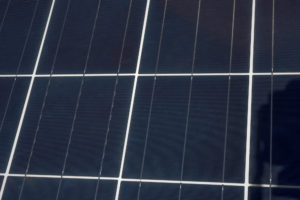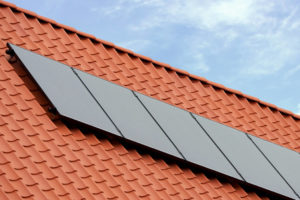It is common for people to want to set up a solar energy system on their property.
It is supposed to be cost-efficient, refined, and in tune with what you want. While all of these things are true, it is important to understand your requirements and what each system brings to the table.
There are two types of readily available systems for property owners – Solar PV and Solar Thermal Systems.
Here is a deeper look into what each one has to offer and how well it works.
Contents
Key Takeaways
- Solar PV systems are ideal for generating electricity for various purposes, while solar thermal systems are primarily used for heating water, often in conjunction with central heating systems in residential settings.
- Solar PV relies on photovoltaic cells to convert sunlight into electricity, while solar thermal systems utilize heat collectors to generate power from the sun’s heat.
- Solar PV systems are simpler to set up and maintain compared to solar thermal systems, making them a more straightforward choice, especially for home installations.
What is Solar Photovoltaic?
Photovoltaic technology refers to the use of PV materials for converting sunlight into usable electrical energy.
A photovoltaic (PV) cell is a device that is used to convert solar energy. In general, each cell produces a specific amount of power (1-2 watts). Each cell is made of a unique material that can conduct power and is small to the naked eye.
 These PV cells are interlinked as chains to make sure a comprehensive amount of power is generated. These linked units are called panels. Most of them are connected to create arrays, which are then linked to the electrical grid to finish the system. Due to how these systems are designed, they can be set up almost anywhere.
These PV cells are interlinked as chains to make sure a comprehensive amount of power is generated. These linked units are called panels. Most of them are connected to create arrays, which are then linked to the electrical grid to finish the system. Due to how these systems are designed, they can be set up almost anywhere.
The PV system also encompasses mounting structures to hold the panels in the direction of the sun. This ensures the unit is getting enough energy to process as much electricity as possible.
What is Solar Thermal?
Solar thermal energy refers to technology that makes use of the sun’s heat. There are designated solar thermal collectors that act as specific units to harness heat at different temperatures.
For example, a low-temperature collector will be a simple flat plate that can harness heat. While there are medium-temperature collectors that are going to come in as flat plates but can be used for managing larger requirements such as heating water.
For high-temperature collectors, the emphasis is on the use of mirrors/lenses that will take the heat and produce electricity.
What are the Differences Between Solar Photovoltaic and Solar Thermal?
Use Case
It starts with the use case.
When it comes to simpler solar systems, it is common to see both types of systems being used. However, the use case differs because PV systems are used for different processes. For example, a residential PV unit is going to be specifically used to generate energy across the property. It is going to be used for any appliance that you might be running indoors.
On the other hand, a residential solar thermal unit will be used directly for heating water. This commonly works in sync with the central heating system that is already in place.
For commercial electrical grids, both types need to be interlinked for maximum results. It is common to see these interlinked systems provide energy for different parts of a factory and/or other types of commercial settings.
Tech
The underlying technology that is used to run these systems is different.
With solar PV, the technology takes advantage of the photovoltaic effect, which is only possible using cells. These cells are then interlinked together to create a set amount of watts (1 or more watts). This is only possible when the sun is hitting the unit for an extended period.
On the other hand, solar thermal relies on the use of heat. The temperature collectors that are present in the system take advantage of the heat to convert it into electricity.
Simplicity
Solar PV is far simpler in comparison to a solar thermal system.
The reason has to do with the cells being interlinked and working as a panel. This is far easier to run and low-maintenance, which is a positive for those looking to set it up at home.
Just having the panels ready to go will usually work well over the long haul. On the other hand, a solar thermal system will also require energy transmission as the heat comes through, which can be pretty complicated.
What Are the Pros and Cons of Solar PV Panels Vs. Solar Thermal?
Pros
Clean Energy
The clean energy that you are going to get to enjoy is important.
Solar power is all about maximizing energy, and it is not as complicated as a solar thermal unit. This means you are going to get clean energy, and it is not going to be interrupted by a set of steps.
This alone is a powerful plus point and does matter to those looking to go with a more hands-off approach to their system.
Low Maintenance
 Don’t like the idea of always having to go up and fix the solar energy system?
Don’t like the idea of always having to go up and fix the solar energy system?
This is the last thing property owners want to do, and rightly so. You are going to want a streamlined solution that is on par with what you want and isn’t going to get in the way of what you are doing.
If that is the case, you will want to start with this solution. It is going to be low maintenance and as effective as you want it to be.
Solar PV systems tend to last for a long time, even when there is a sizable upfront cost. This alone is a huge positive for property owners.
Silent
No one wants the system to start making loud noises as soon as the sun comes out.
This is not going to be an issue with the solar PV system because it will work quietly in the background without getting in your way.
This is a positive for those who are going to be installing the system in a residential area. You don’t want the neighbors to start complaining about how loud the system is.
Cons:
Need Storage Batteries
The first issue with this type of system has to do with the need for storage batteries. The system needs a backup for it to work, including investing in storage batteries to go along with the system.
Low Efficiency
When it comes to efficiency, you are not going to see a lot of it with the solar PV system. This is just the nature of how the system works because it depends on when the sun is out and how long it hits the solar panels.
You have to realize each cell is going to create a small number of watts. This means the entire panel has to be exposed to sunlight for it to work to maximum efficiency.
As a result, the installation does play a significant role in how efficient the unit is. Getting it done with a professional is a must due to this reason.
Experience Solar Excellence with Us!
Trust in Solar Panels Network USA, where our seasoned experts deliver top-quality solar solutions for homes and businesses nationwide. With a legacy of countless successful installations and a commitment to sustainable energy, we’re your reliable partner in the solar journey. Ready for a brighter, eco-friendly future? Call us now at (855) 427-0058 and harness the power of the sun!
Conclusion
These are the differences that are seen between the two types of systems.
It comes down to what you want and what you are going to be using the system for. Each situation is unique. If you want something simple and cost-efficient, the solar PV system will be a better fit.
About the Author
Solar Panels Network USA stands at the forefront of solar energy solutions, driven by a team of seasoned solar engineers and energy consultants. With over decades of experience in delivering high-quality solar installations and maintenance, we are committed to promoting sustainable energy through customer-centric, tailored solutions. Our articles reflect this commitment, crafted collaboratively by experts to provide accurate, up-to-date insights into solar technology, ensuring our readers are well-informed and empowered in their solar energy decisions.

